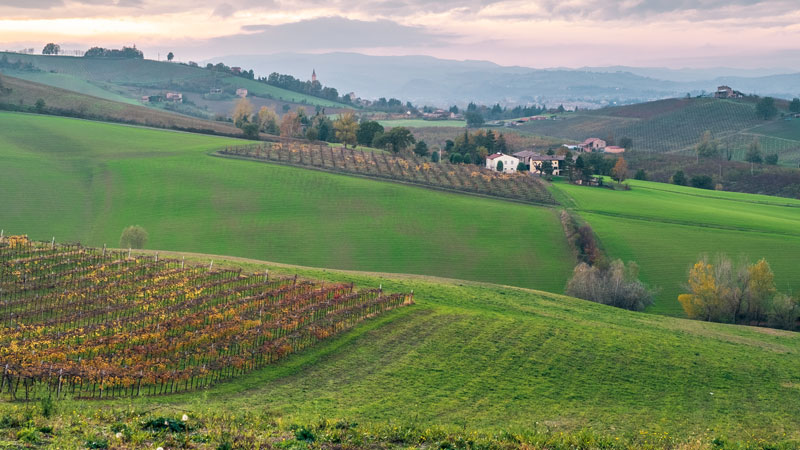“You will definitely wow your friends if Pignoletto rolls off your tongue,” says Belinda Chang, a sommelier and James Beard Award-winner for Outstanding Wine Service in 2011. The Italian sparkler has the potential to “stump your sommelier,” too, Chang says.
A frizzante wine from Emilia-Romagna, Pignoletto is light and fruity, with herbal aromas, citrus notes, and crisp apple flavors. Comparisons to that other bubbly Italian powerhouse, Prosecco, are inevitable; but Pignoletto typically has fewer sweet flavors and a longer finish.
Jon McDaniel, an award-winning sommelier and the founder and CEO of Second City Soil, says Pignoletto “really has the ability to be the Prosecco killer. It has the light bubbly nature, freshness, [and] a very floral, orange-blossom, white-orchid kind of nose. It is basically halfway between Moscato and Prosecco.”
McDaniel says the flavors, finish, and easy-drinking bubbles give Pignoletto a built-in fan base in the U.S., where sparkling wine consumption is on the rise. Americans currently spend $4.303 billion on sparkling wine, and the market is predicted to grow by 3.5 percent annually through 2023, according to data collected by Statista.
Pignoletto pairs easily with food, Chang says, and “generally comes in at a price point suitable for daily drinking.”
“Personally, I love a nice, crisp, fizzy Pignoletto as an alternative to an Aperol Spritz as an aperitivo before dinner,” McDaniel says. “It balances out salty canapés and happy-hour bites such as olives, lighter charcuterie, and fried anchovies.”
He also thinks it’s a natural fit for the boozy brunch crowd. Pignoletto “can meet a huge demand of millennial drinkers and novice sparkling drinkers that just want something light, bubbly and fruity,” he says. “This is the perfect brunch bubbly for Mimosas and those kind of things,”
Why, then, aren’t you and everybody you know drinking more Pignoletto? The issue lies in distribution.
“There aren’t a lot of producers that make it and a lot of buyers don’t know about it,” McDaniel says. Many American buyers “won’t be shown the wine by distributor reps because they think Prosecco is much easier to sell.” In Chicago, where McDaniel works, no local distributors offer Pignoletto.
“It is going to take a large producer to start making a lot of it for it to be a wine that actually makes a difference in the marketplace,” he says. “Buyers in this market are never going to find out about it until it starts to become available en masse.”
Chang agrees, saying that the crowded sparkling marketplace could make it difficult for Pignoletto to break through to U.S. consumers.
“Though it seems like the weirder and the more unusual wines always win on the wine lists in all of the hip and trendy wine shops and wine lists these days, I think that it will be a huge wall to scale for Pignoletto to reach its full sales potential here in the U.S.,” Chang says. “Prosecco producers have been making all of the right marketing and pricing moves to continue their dominance.”

Fortunately, some Italian producers are expanding production. While nothing beats a trip to Emilia-Romagna, there are places to buy Pignoletto in the United States — provided you know where to look. Here are a few of our favorites.
3 Pignoletto Wines to Try
Fattoria Morreto 2017 Pignoletto Frizzante
The perfect complement to your cheese board, this dry sparkler has citrusy, herbal notes. Average price: $19.
Tre Monti Pignoletto 2017, Doppio
Light and fruity, this would make an excellent addition to a bubbly brunch cocktail. Average price: $15.
Il Monticino Pignoletto Frizzante Colli Bolognesi 2016
With lots of acidity and light citrus, this is a stellar aperitif wine. Average price: $17.
